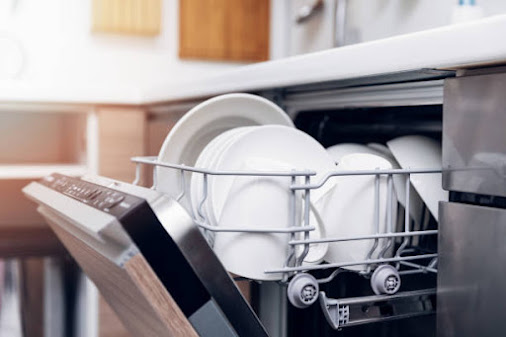How To Use Your Dishwasher Most Effectively
A dishwasher can clean difficult stains and hard-to-reach areas that you might miss by handwashing. It also uses high temperatures and powerful jets of water to eliminate germs and bacteria that may have stuck to the dishes or utensils. Using a dishwasher can save you more than 230 hours a year, compared with washing your dishes by hand. It also uses less water than handwashing, as it can wash up to 10 place settings with only 12 liters of water. Here are some of them:
• Don't bother pre-rinsing. Modern dishwashers and detergents are designed to handle food residue, and pre-rinsing can waste water and energy. Just scrape off any large chunks of food and load your dishes as they are.
• Choose a detergent that suits your water type. If you have hard water, you may need a detergent with more phosphates to prevent mineral deposits on your dishes. If you have soft water, you may need less detergent to avoid residue.
• Load your dishwasher properly. Follow the manufacturer's instructions for your specific model and place dishes facing the spray arms for optimal cleaning. Avoid overloading or underloading the dishwasher, and use the appropriate racks for different items. For example, place glasses and cups on the top rack, plates and bowls on the bottom rack, and utensils in the basket.
• Select the right cycle. Choose a cycle that matches the level of soil and the type of dishes you have. For example, use a normal cycle for everyday dishes, a heavy cycle for pots and pans, or a delicate cycle for fine china. You can also use special options such as high-temperature wash or heated-dry if available.
• Clean and maintain your dishwasher. Periodically run a cleaning cycle with vinegar or baking soda to remove any odors, grease, and limescale from your dishwasher. Rinse the filter and wipe the door seal weekly to prevent clogs and leaks. Check the spray arms for any debris and clean them if needed.
Types Of Dishwashers
• Built-in or undercounter dishwashers. These are the most common type of dishwashers that are installed permanently under the kitchen countertop. They typically have a standard size of 24 inches wide and 35 inches high, and can hold up to 16 place settings. They offer various features such as hidden controls, third racks, adjustable racks, and flexible tines.
• Portable dishwashers. These are smaller and more mobile dishwashers that do not require a permanent plumbing connection. They can be hooked up to the kitchen sink faucet with a faucet adapter and rolled away when not in use. They come in different sizes, such as 24-inch, 18-inch, and countertop models. They are ideal for small kitchens, apartments, trailers, or RV.
• Countertop dishwashers. These are the smallest and most compact type of dishwashers that can fit on a kitchen counter or table. They can hold up to six place settings and connect to the sink faucet with a hose. They are easy to use and energy-efficient, but they have limited features and capacity compared to larger models.
• Integrated or panel-ready dishwashers. These are built-in dishwashers that can be customized with a panel that matches the kitchen cabinetry for a seamless look. They have the same features and performance as regular built-in dishwashers, but they offer more design flexibility and aesthetic appeal.
• Commercial dishwashers. These are heavy-duty dishwashers that are designed for restaurants, hotels, cafeterias, or other food service establishments. They can wash large quantities of dishes quickly and efficiently, using high temperatures and powerful jets of water. They have different sizes and configurations, such as undercounter, door-type, conveyor-type, or flight-type.
• Drawer dishwashers. These are innovative dishwashers that have one or two drawers instead of a door that opens downward. They can be installed at any height under the countertop for easy access and loading. They offer more flexibility and convenience than traditional dishwashers, as they can run independently or simultaneously with different wash cycles and settings.




Comments
Post a Comment